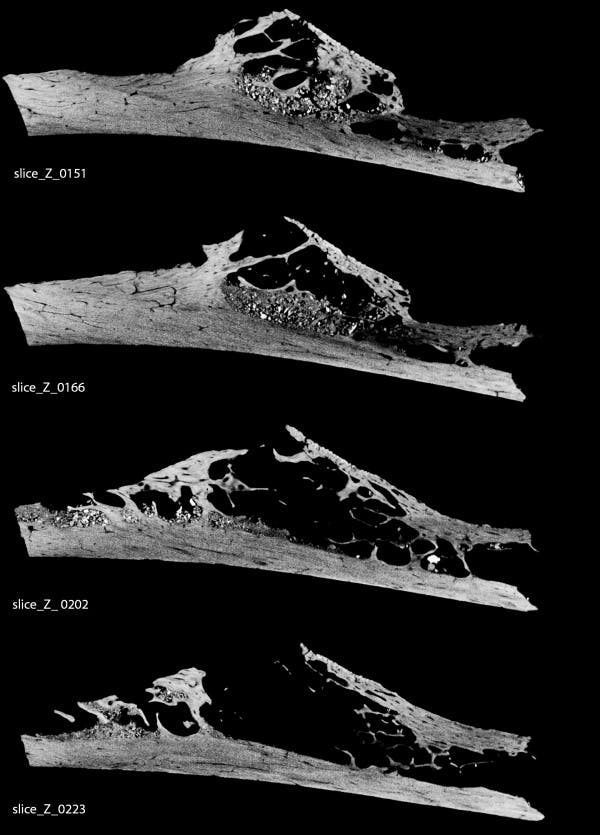The first known case of a bone tumor has been discovered in a Neanderthal who lived about 120,000 years ago in what is now present-day Croatia. The bone samples come from the already famous cave/archaeological site Krapina, which now hosts a Neanderthal Museum.

Bone tumors are exceptionally rare finds in fossils and archaeological records, with the previous earliest records being approximately 4.000 years old. Even in today’s world, cases of bone tumors are relatively rare.
Using a CT scan and an X-ray, researchers identified a fibrous dysplastic neoplasm – an abnormal bone growth where normal bone is replaced with fibrous bone tissue. Today, this is the most common form of benign bone tumor in humans. The tumor was located on a Neandertal left rib fragment that measured 30 mm (4 ½ inches) long. Judging by the size and shape of the fragment, the Neanderthal was probably a young male.

“This tumor may provide another link between Neandertals and modern peoples, links currently being reinforced with genetic and archaeological evidence. Part of our ancestry is indeed with Neandertals—we grow the same way in our bones and teeth and share the same diseases.”
Full study: Fibrous Dysplasia in a 120,000+ Year Old Neandertal from Krapina, Croatia


